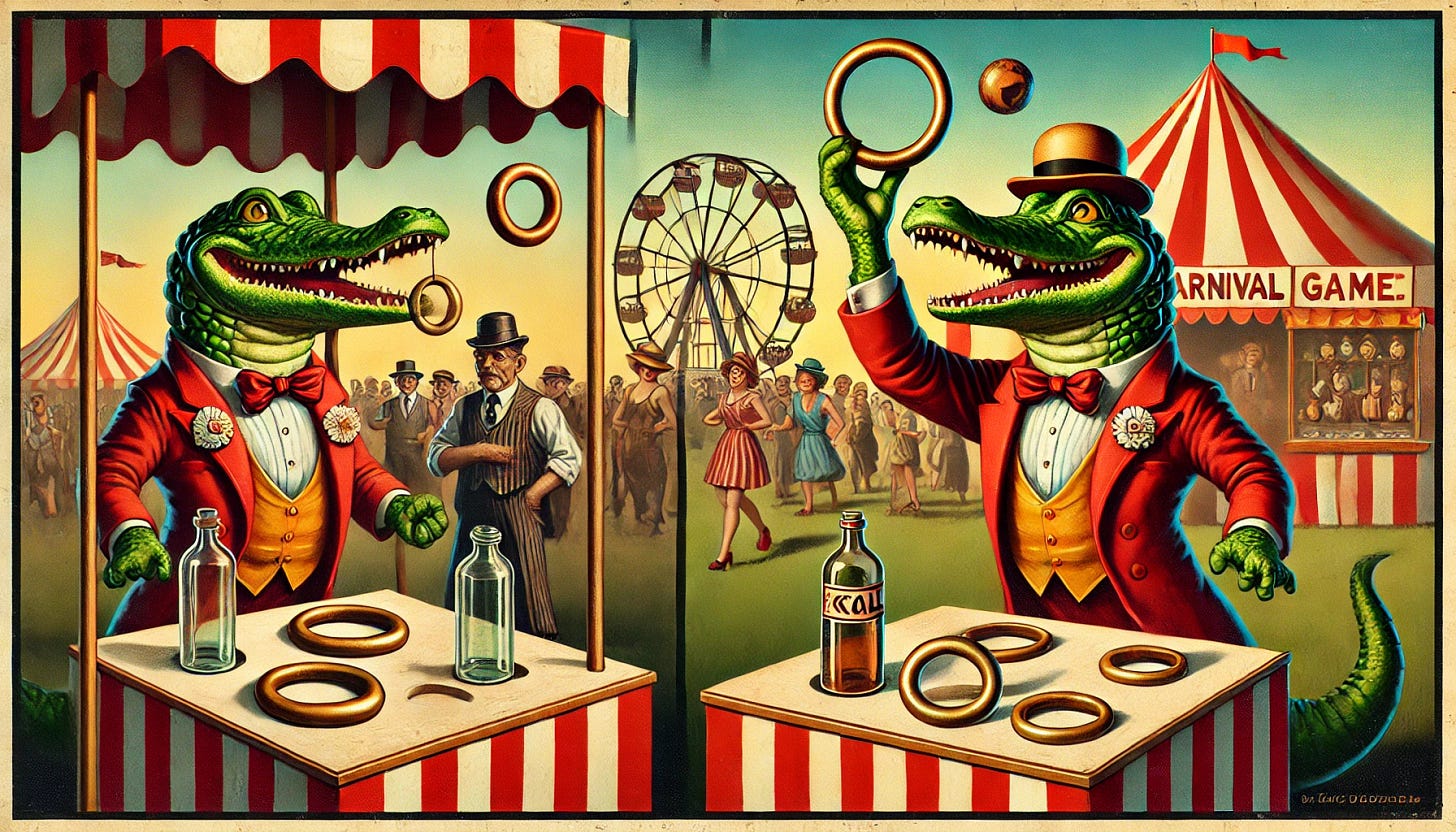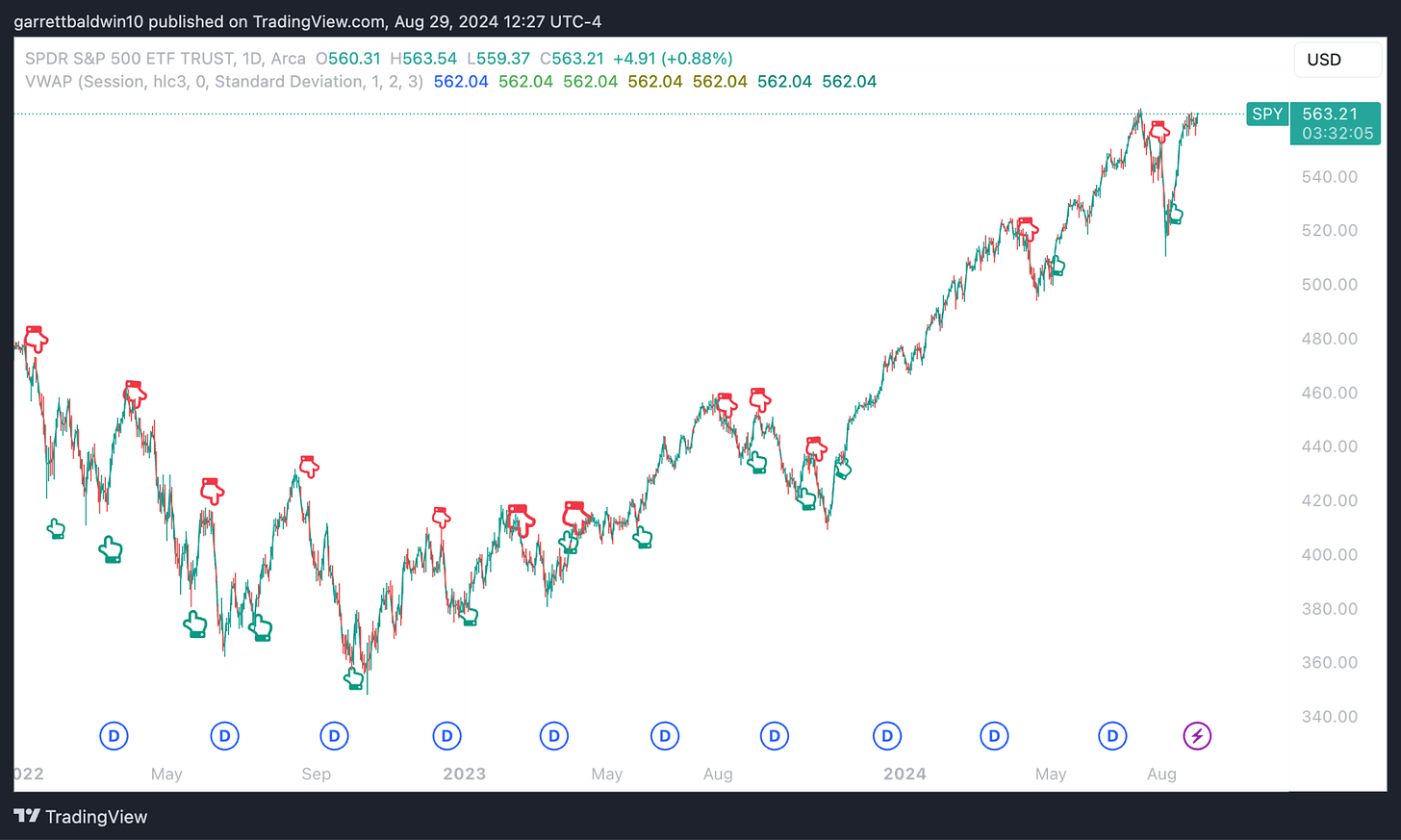Postcards: Yes, The Market Game Is Rigged - The S&P 500 Goes Red For An Hour
Market Update:
We were RED across the board heading into the final hour but look for institutions to do some bidding into the final hour. Massive outflows today and an explosion in the VIX. It is time to pay close attention to the oversold levels of the RSI and MFI on the S&P 500 Index. This selloff was somewhat predictable, and volatility is likely heading higher into options expiration in two weeks. As I noted in my first warning today on the Russell 2000, look for stair-step patterns with short-term pops and institutional selling. We’re over the wall, and it’s time to build some cash - as investors turn to cash and similar assets. The dollar is popular in these types of downturns. We’re negative on ADX on the QQQ, IWM, and SPY. Get ready.
A lot of people say that the market isn’t rigged. You’ll hear this on your friendly news station as they try to convince you to buy the latest unprofitable cloud computing stock. As I noted, the purpose of a market is to SELL, so you need to be very cautious of anyone trying to get you to buy something… just because of FOMO.
The market itself - in theory - isn’t rigged. But the players sure are.
The carnival games that people play with information are certainly rigged. Knowing what you’re up against is the first step to truly if and when you want to play the game.
Here are five classic examples…
Price Manipulation? Yeah, It’s a Thing
Big players, such as hedge funds and large institutions, can manipulate stock prices through coordinated buying or selling, fake news, or misleading analysis, creating artificial highs and lows that trap retail investors. In this situation, the only thing that rises faster than prices is suspicion…
High-Frequency Trading (HFT)
HFT firms use algorithms to execute trades in milliseconds, exploiting market inefficiencies before retail investors can react. This advantage allows them to profit from minuscule price movements, often at the expense of slower, individual traders. They’ve already arbitraged untold fortunes when you’ve changed your socks. Why wait a second to profit when you can do it in a millisecond?
Dark Pools
These private trading venues allow institutions to trade large blocks of stock without public visibility, leading to a lack of transparency. Dark pools are a place where stocks go to swim… and secrets never surface. Retail investors are left trading in less informed markets, unable to see the true demand or supply.
Payment for Order Flow (PFOF)
This is a controversial one. Payment for Order Flow is a process where brokers sell retail orders to market makers, who execute the trades. This process often prioritizes the market maker's profit over getting the best price for retail investors, leading to poorer execution prices. The benefit they claim is that you don’t have to pay commissions.
So, yes, your trades get a free ride… straight into someone else's pocket.
Insider Trading
Insiders, including executives and institutional investors, often have access to non-public information, allowing them to trade advantageously. Retail investors, lacking this information, are left at a significant disadvantage in timing their trades.
This is a place where the house wins because they’ve already seen the cards, while the rest of us are left guessing the game."
But it’s a matter of patience and knowing how to play the cards we’re dealt. For example, we use insider trading efforts to our advantage.
Instead of buying the stock a few percentage points above where the CEO or CFO purchased the stock (after the stock moves higher on the news), we focus on selling credit spreads that would tie us back to the stock at or below where the executive bought the stock.
Regarding capital flows in the market, we’re watching money move in and out with our Equity Strength Signal. Today, we moved Red, and we warned this morning before the selloff accelerated and volatility really exploded that lots of money was leaving the markets - and not moving back into other equities.
For example, CNBC is covering that a stock like NVIDIA (NVDA) is down 9.2% at the time of this writing, but it doesn’t explain what this means.
A 9% decline on NVIDIA isn’t about a stock going down. It’s about a $2.7 trillion company losing nearly a 10th of its market capitalization, and the ensuing $225 billion leaving the equity markets altogether.
All this selling has not fueled a reallocation of capital into other stocks.
FInviz
It’s moving to cash, bonds, and other short-term assets.
This was our chart of positive and negative events since January 2022 before the negative signal about 10 minutes ago. As you can see, we aren’t calling a straight top. And markets don’t move straight down.
Look at the short-term selloffs before the signal turns negative in another sign of a rigged game. Do you see how often there’s a dip, a pop, and then a dump (right when the signal turns negative?)
Those short-term pops are typically low-volume “Bull Traps” where retail investors get sucked back into the market…
And then… the dump follows.
More By This Author:
Is This The Next Speed Bump For U.S. Markets In October?They Think We're Dumb
Postcards: The Week Ahead And The Trap Behind Me
Disclosure: None.







